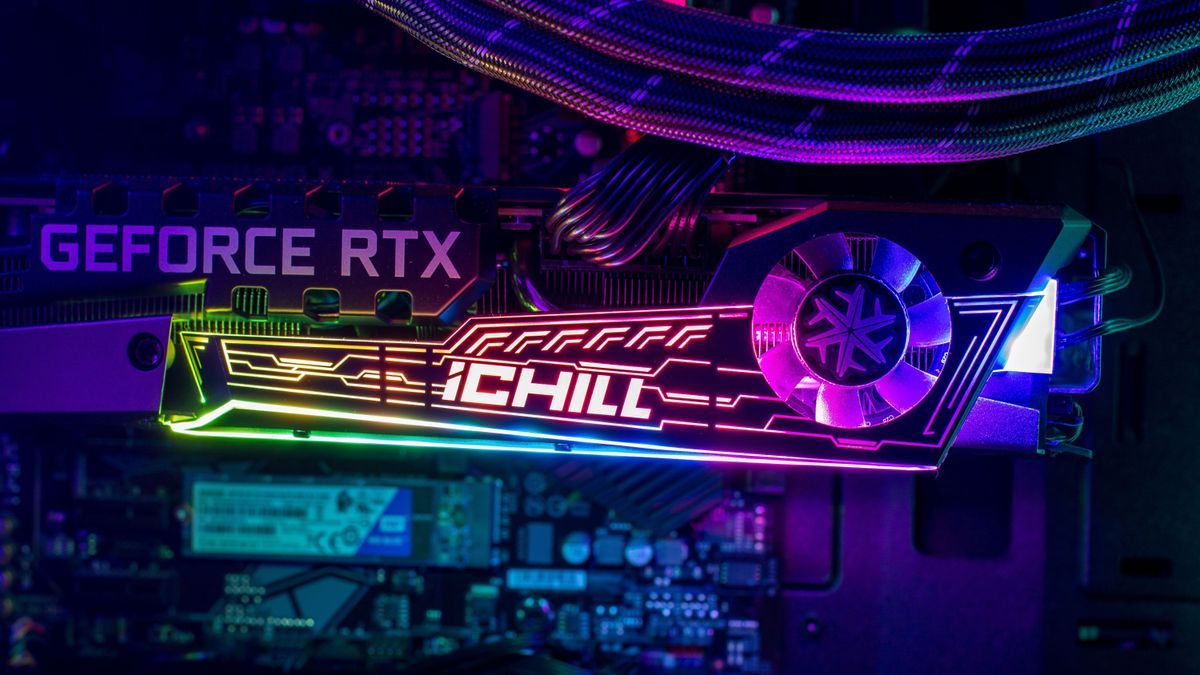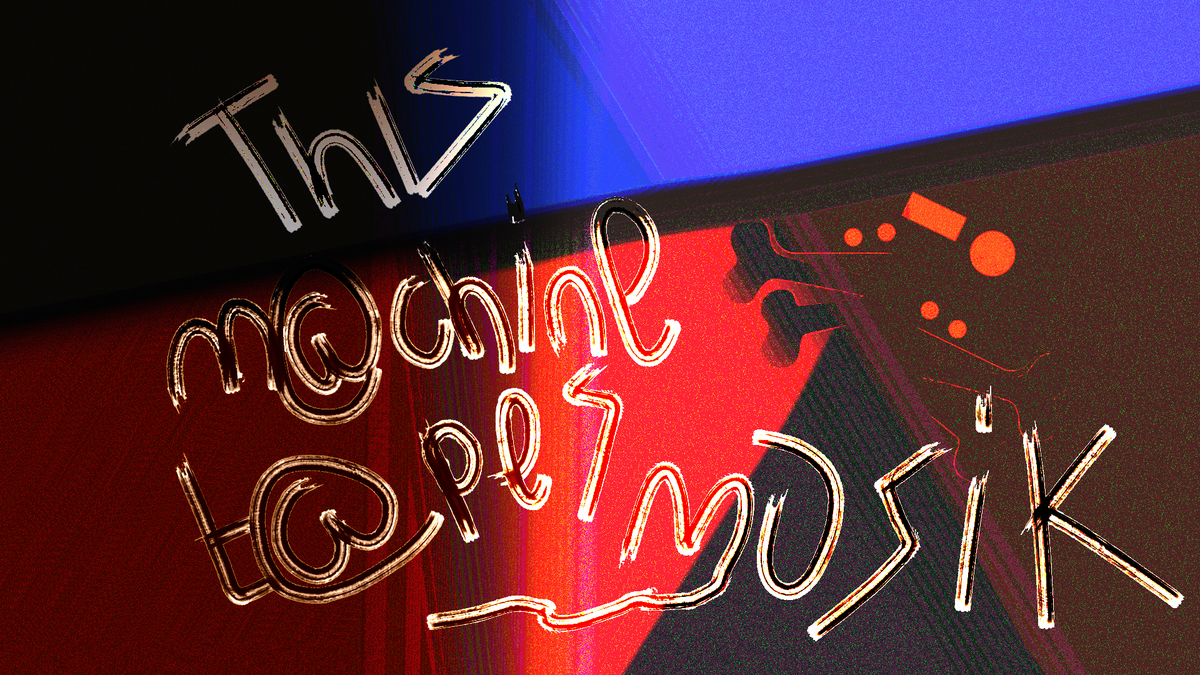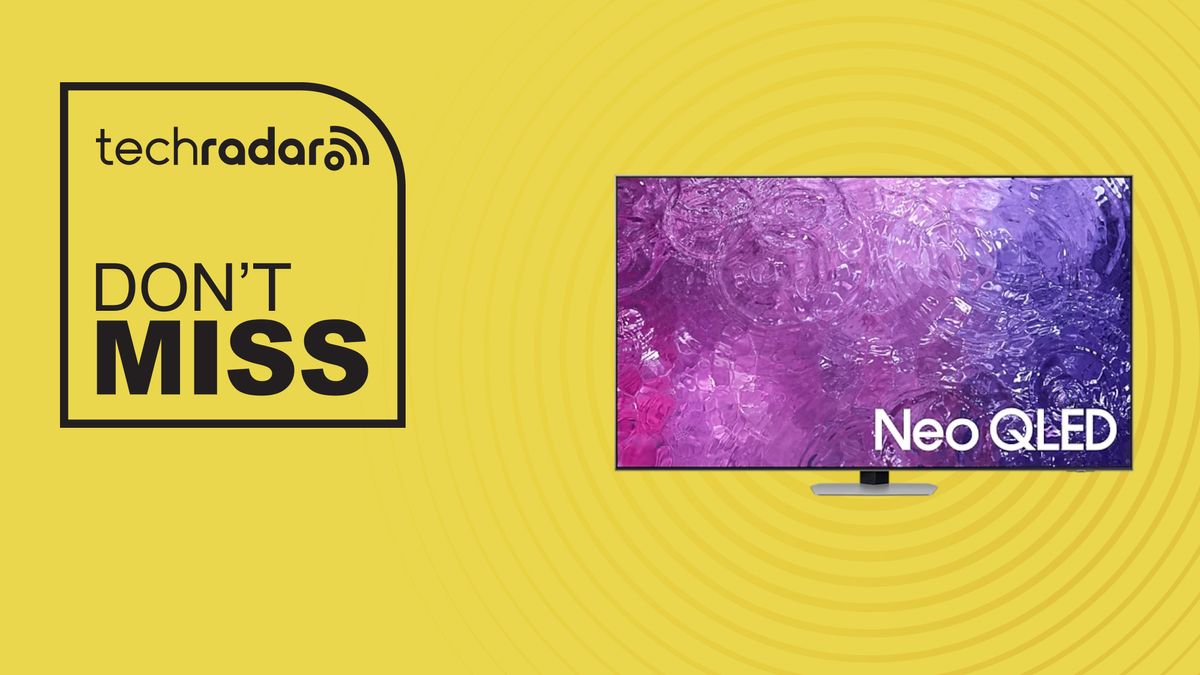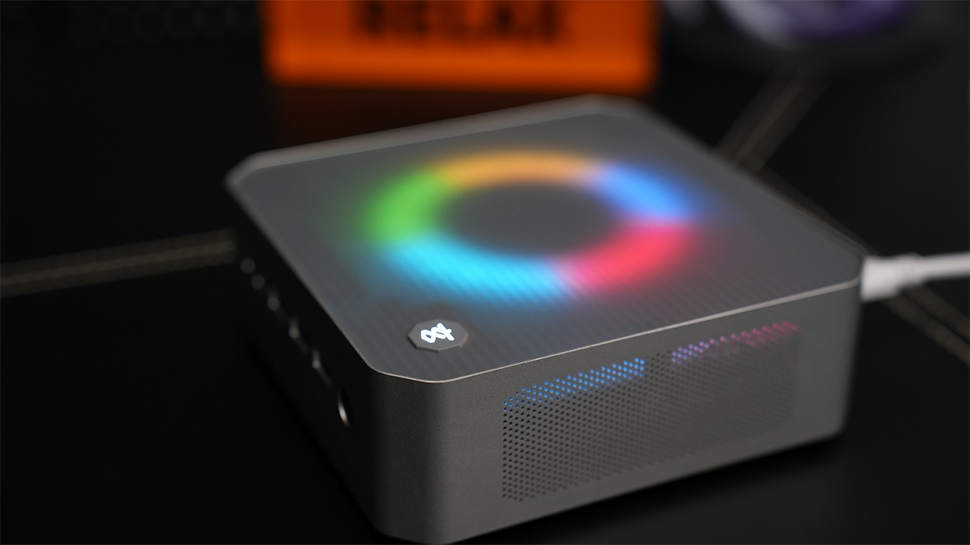There I was, examining RTX 4080 Super reviews, wondering what the world has come to when an upgrade to a supposedly better value GPU still costs $1,000. So, a simple idea occurred to me: the performance baselines of current graphics cards are a lot better than they used to be.
I started thinking about my first graphics card, the 2008 Nvidia GeForce 9600 GT, and how I was praying it would hit 60fps at 1080p on high settings. And today? Today, I think a new GPU should give me least 100 fps at 1440p at maximum settings. Do you have the right or what?
Well, maybe I don't have the right. Perhaps today we can create much better technology with manufacturing costs so low that, in fact, we all deserve a share of the profits granted by Moore's Law. Anyway, these thoughts led me down a rabbit hole of research and I was a little surprised by what I found.
Call me a glutton for clickbait headlines, but this much is true: GPU prices are no more expensive than they used to be. You do not believe me? I have the data to prove it.
GPUs from the 1990s to the present
The pre-40 series GPUs I chose for comparison were all popular high-end cards of their time. Here's a quick summary:
- The Voodoo2 made 800×600 gaming possible and often ran in SLI.
- The 9700 Pro with R300 GPU ushered in affordable 2000-era gaming.
- The 8800 GTX oversaw the Xbox 360 (and Crysis) era of high-fidelity 1080p gaming.
- The R9 290 and GTX 980 dominated the Xbox One era of even higher fidelity gaming.
And the rest is history… or, well, more recent history.
I focused primarily on Nvidia cards because they have received the brunt of complaints that GPUs are too expensive. Similarly, I decided to leave recent 40-series Super cards out of the equation because non-Super cards were the most affected by these complaints.
| Header cell: column 0 | Release date | Price at launch | Price (adjusted for inflation) | Clock speed | Memory |
|---|---|---|---|---|---|
| 3dfx voodoo2 | 1998 | $299 | $566 | 90MHz | 12MB EDO |
| ATI 9700 Pro | 2002 | $399 | $684 | 325MHz | 128MB DDR memory |
| Nvidia GeForce 8800 GTX | 2006 | $599 | $916.38 | 576MHz core / 1350MHz shader | 768MB GDDR3 |
| AMDRadeon R9 290 | 2013 | $399 | $528.25 | 947MHz | 4GB GDDR5 |
| Nvidia GeForce GTX 980 | 2014 | $549 | $715.23 | 1216MHz | 4GB GDDR5 |
| Nvidia GeForce GTX 1080 | 2016 | $599 | $769.73 | 1733MHz | 8GB GDDR5X |
| NVIDIA GeForce RTX 3080 | 2020 | $699 | $832.98 | 1710MHz | 10GB GDDR6X |
| NVIDIA GeForce RTX 4080 | 2022 | $1,199 | $1,263.58 | 2505MHz | 16GB GDDR6X |
| Nvidia GeForce RTX 4070 Ti | 2023 | $799 | $808.74 | 2610MHz | 12GB GDDR6X |
Graphics cards are cheaper than before
The first thing to consider (and this is where many people start and end their analysis) is the price of the GPU. We can consider the prices of all these GPUs at launch and then the prices taking inflation into account.
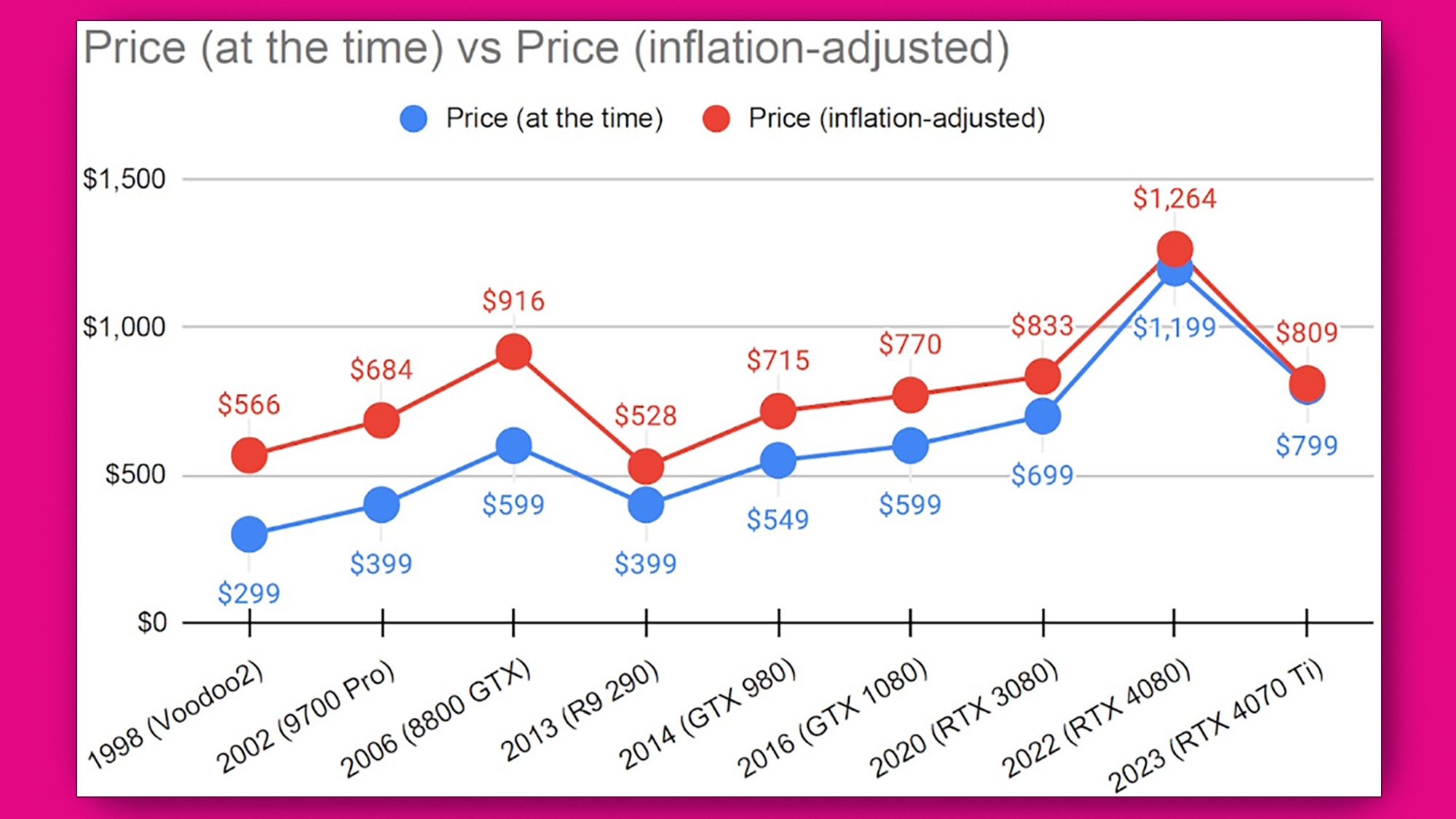
At first glance, this doesn't look too good for current GPUs. But let's compare, for a moment, the 8800 GTX from 2006 and the RTX 4070 Ti from 2023. If we take inflation into account, we can see that the 4070 Ti actually launched for less than the 8800 GTX – both for the “expensive” ” series 40!
Moving on to performance, we see a clear improvement over time.
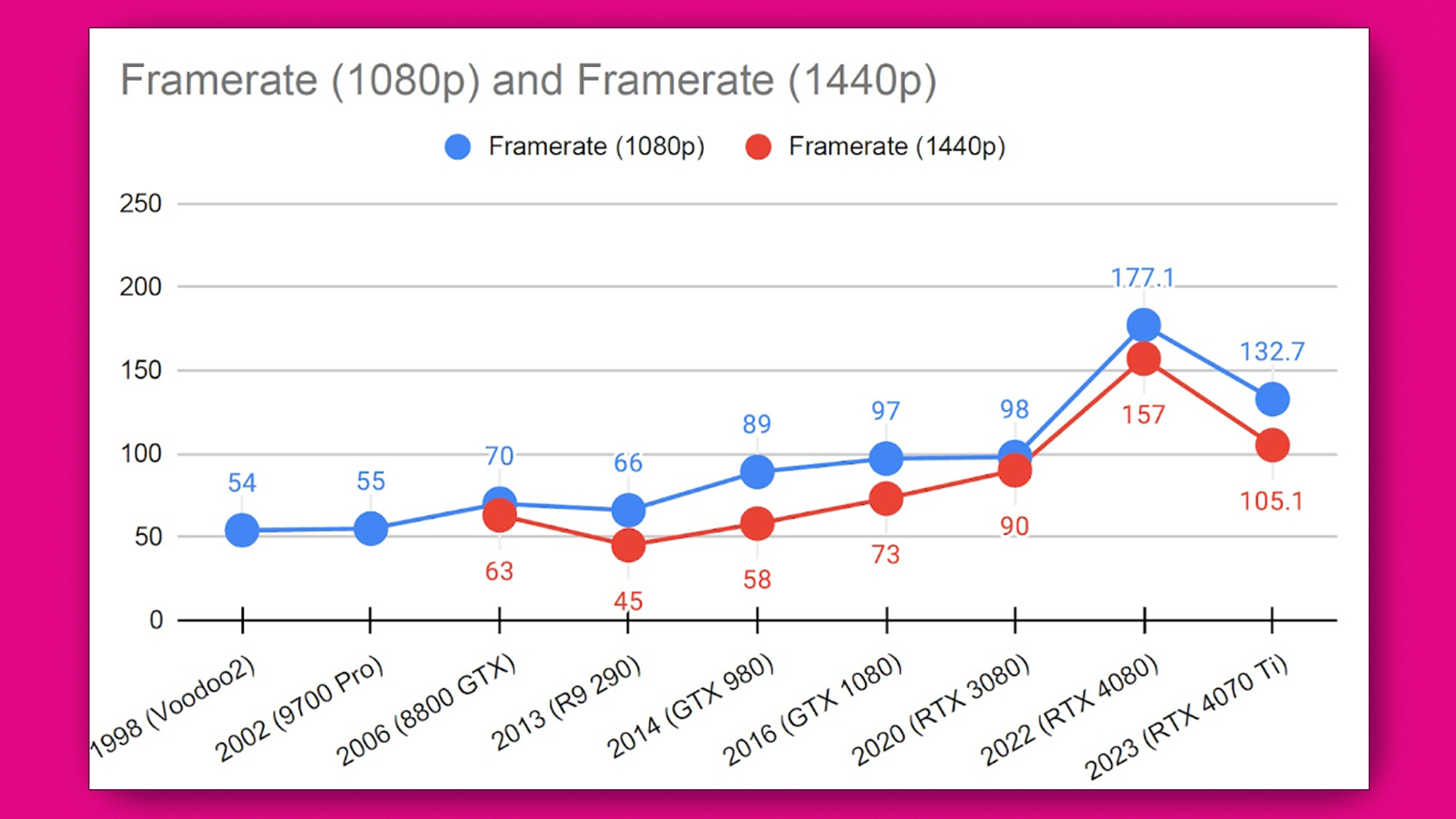
The frame rates listed are for games that were engaging but not demanding at the level of Crysis when each GPU was released..
In fact, we're getting a better deal than we've had at virtually any time in the last 25 years.
For example, I used Battlefield 4 reference data for the GTX 980 (here) and Red Dead Redemption 2 reference data for the RTX 4080 (here). This way we get a more accurate picture of how these GPUs performed in their time.
However, where we really see the test is when we look at the cost per frame of these GPUs when we adjust for inflation. If we ask, “How much do we spend on each frame for each of these GPUs, if we translate that to today's prices?” We see how comfortable we have it today.
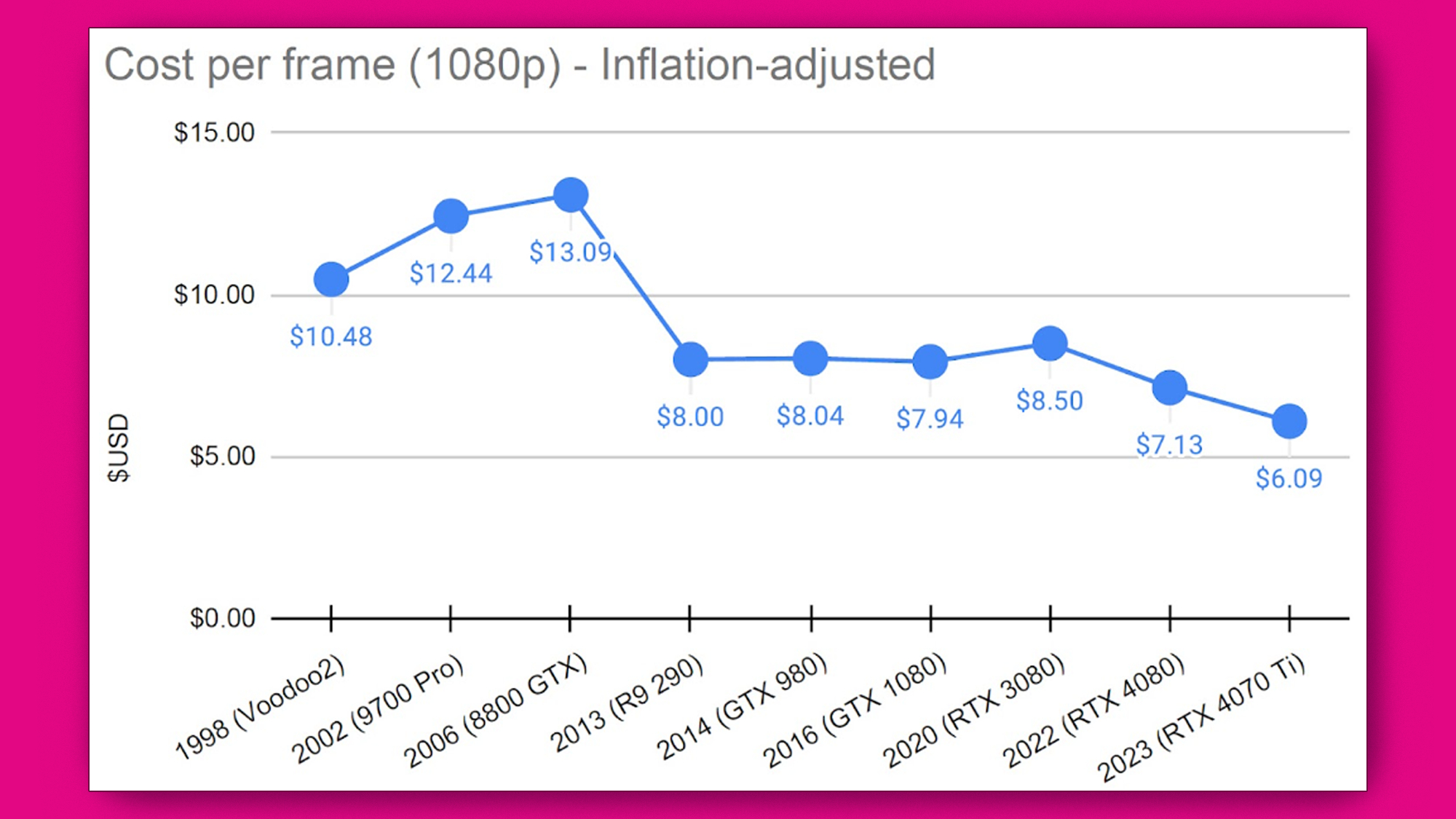
Far from GPUs being expensive today, if we consider the actual performance we get for our dollar, we see that we are actually getting a better deal than we have at virtually any time in the last 25 years..
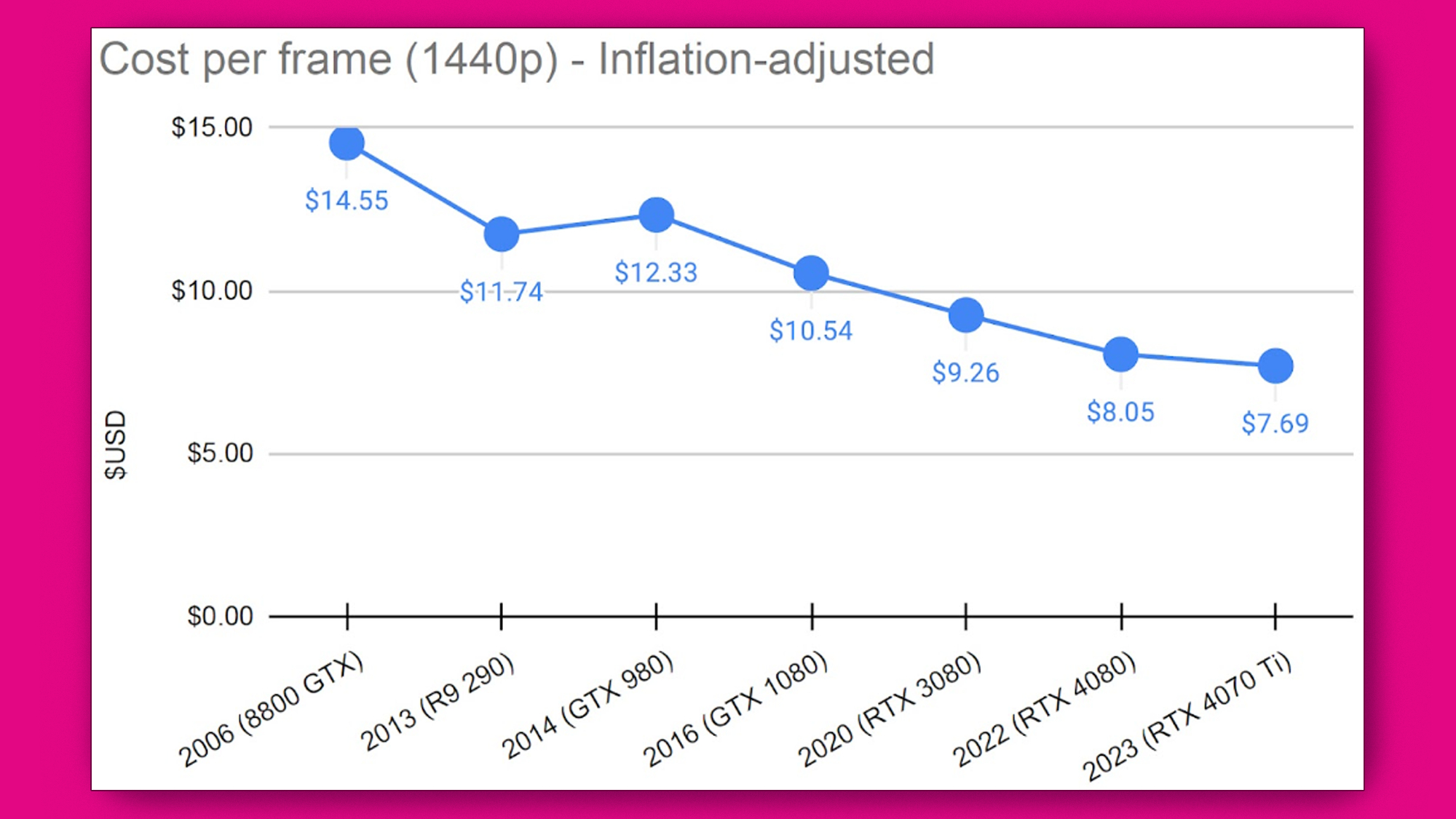
And to get to the point, we see an even clearer image in 1440p.
So far from being more expensive, GPUs appear to be quite expensive. cheap compared to those of yesteryear. That is, as long as we don't conveniently ignore all the huge performance gains we've made with successive generations of GPUs.
These performance improvements cannot be underestimated and should not be ignored when considering current GPU prices. Gone are the days when the holy grail was 60fps at 1080p. Now, the holy grail is something like 100+fps at 1440p. And that's without taking DLSS into account.
We should expect to pay a little more for all that… But it turns out we don't even pay that much for it.
Again, compare the 8800 GTX to the 4070 Ti. For less money (accounting for inflation) than the 8800 GTX, we get almost twice the performance in demanding games today than the 8800 GTX did in the comparatively demanding games of its time.

Why all the fuss?
Despite all of the above, there is definitely something discouraging about high-end GPU prices approaching (or even surpassing) $1,000. But that's only because we consider today's high-end GPUs to be equivalent to those of yesteryear, and we shouldn't.
It makes a lot more sense to compare today's mid-range cards to the high-end cards of the 2000s and 2010s. It's not that we can't get cheaper cards today that give us the relative performance we used to have or better.
None of this takes into account the graphical improvements we are accustomed to today. Compare Very far away 6 to the original Very farand we can see how far we have come in terms of graphical fidelity.
And all this for a more economical cost than ever. This is why Moore's Law arguments don't work: we're not comparing apples to apples here. Not only the performance but also the graphical fidelity has improved exponentially.
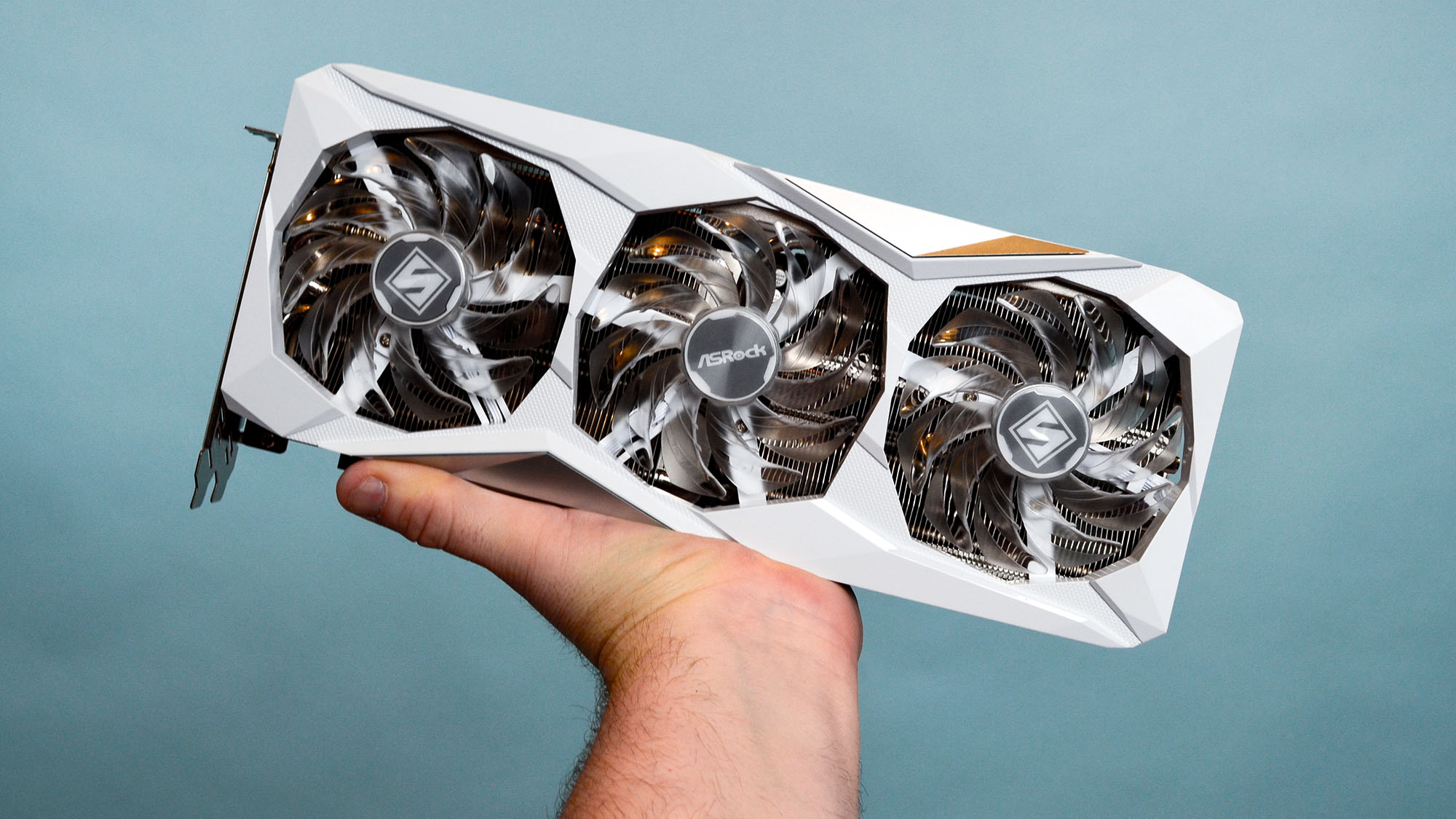
I'm grateful for today's GPU prices.
I started by talking about my first graphics card, the 9600 GT. That GPU launched for $179 in 2008, which, in today's money, is $256.41. You can buy a RTX 3060 for about that, which outputs around 60fps in many demanding titles these days (even at 1440p, in slightly less demanding games). The 9600 GT, on the other hand, I remember struggling to hit 60fps at 1080p in standard titles like Call of Duty 4.
Add another $60 and you can get a RTX 3060Ti – my current GPU. Nowadays, I play games that look 10 times better than the ones I used to play on my 9600 GT, and I get much higher frame rates than I did back then.
What if we want more than that? Well, the options are there, with the best 1440p graphics cards like the RTX 4070 Super either RX 7900 GR. We now see that these cards cost less than the best graphics cards of the past.
And if that wasn't enough for us, the best 4K graphics cards offer a new class of high-end cards far beyond what we could dream of just a decade ago. And fortunately, we don't have to pay much more than we did back then to use one of them.

